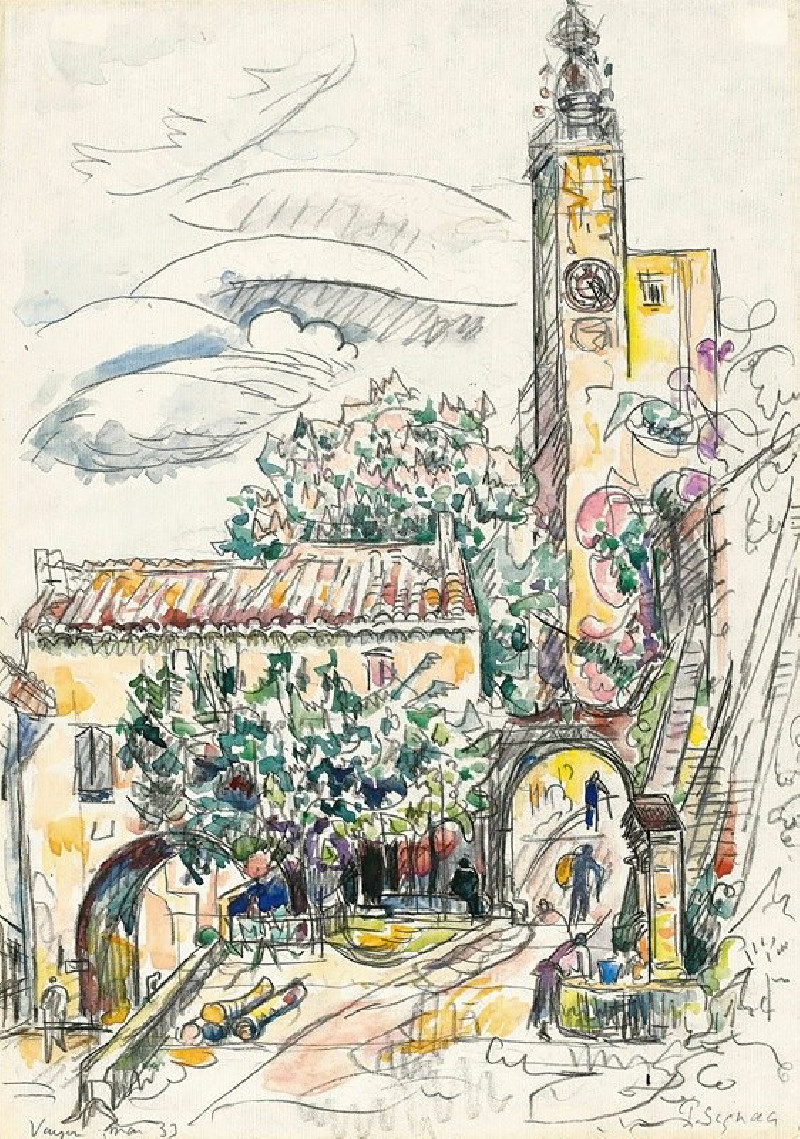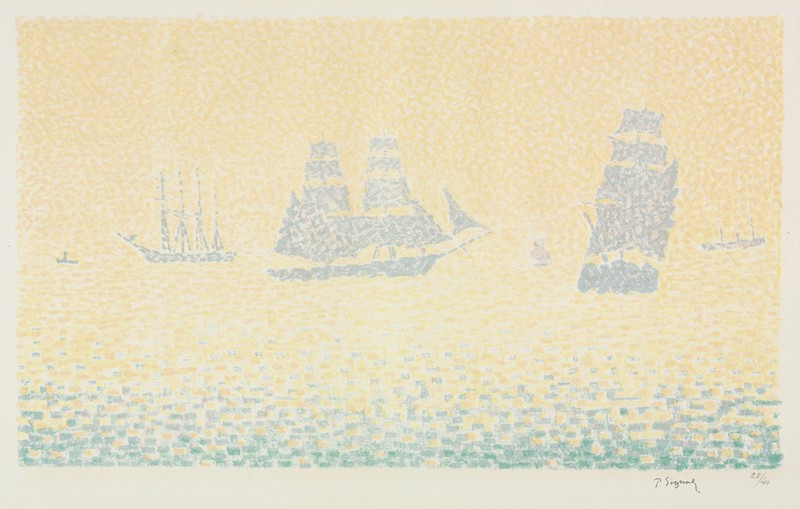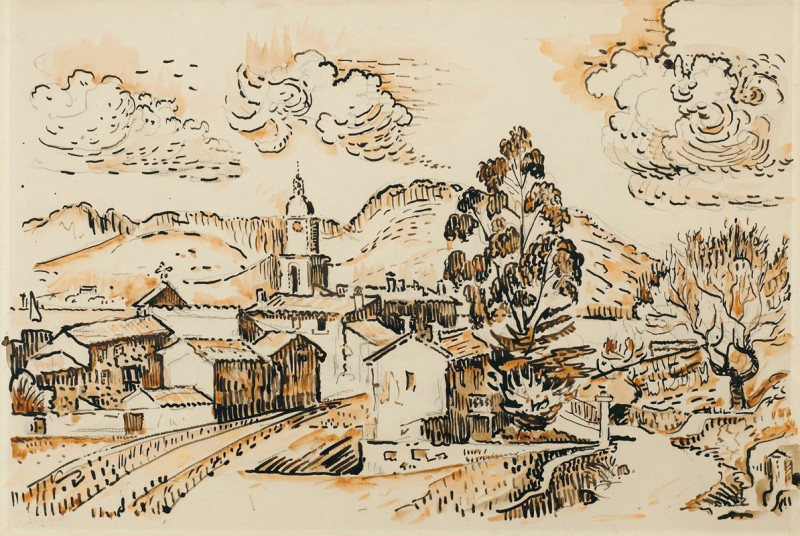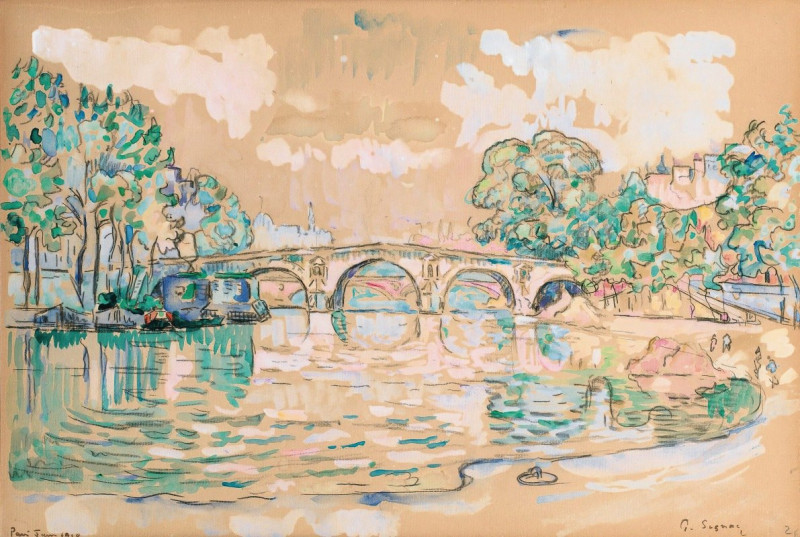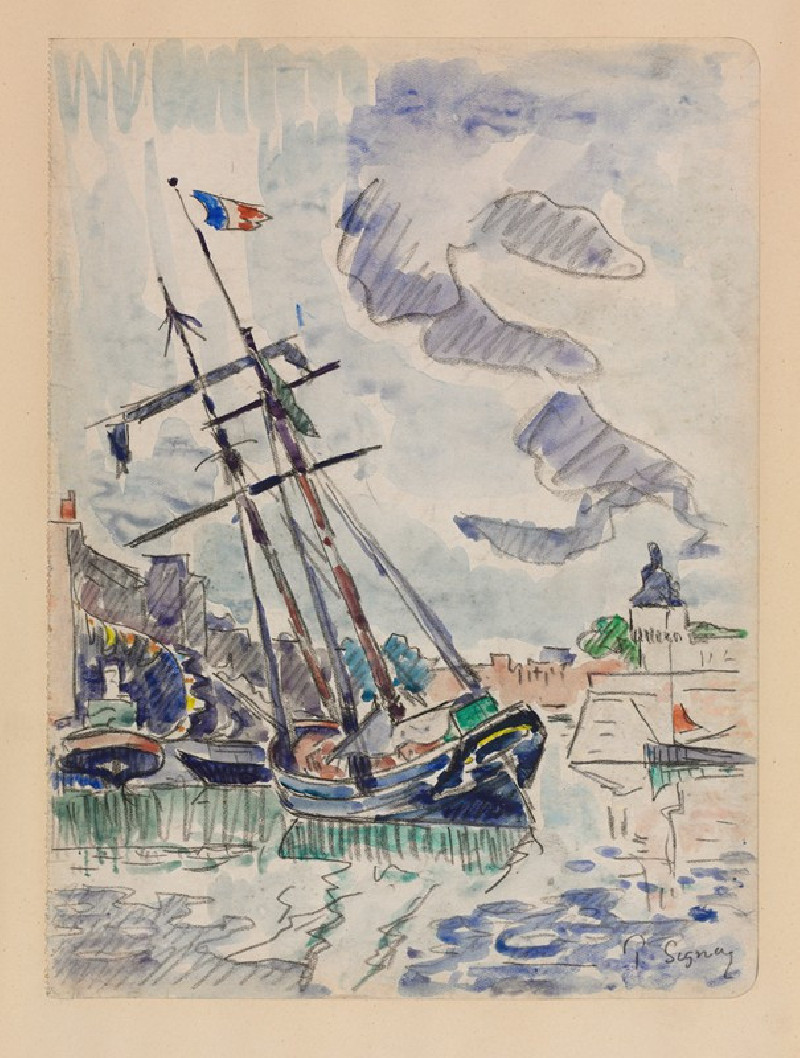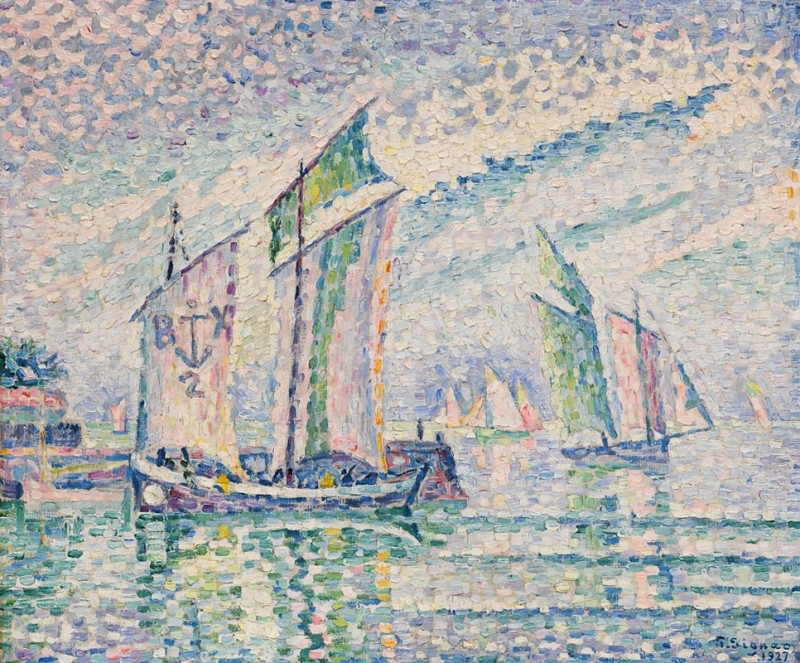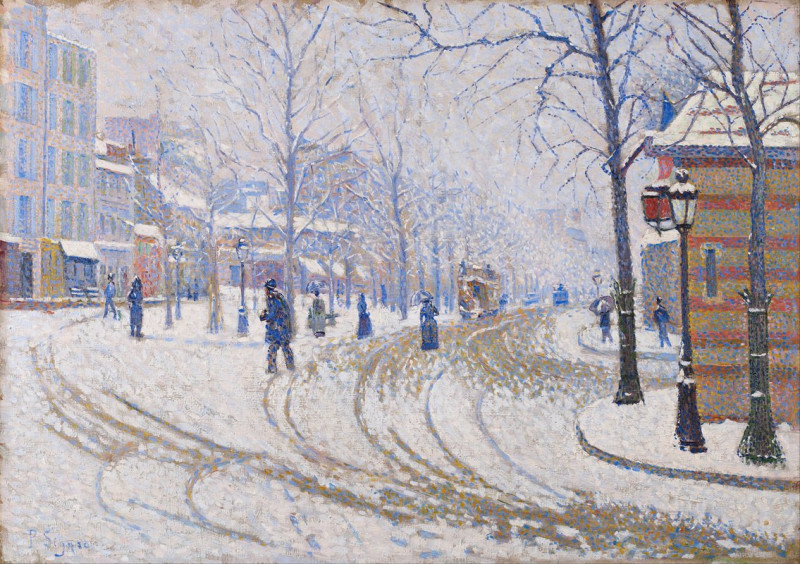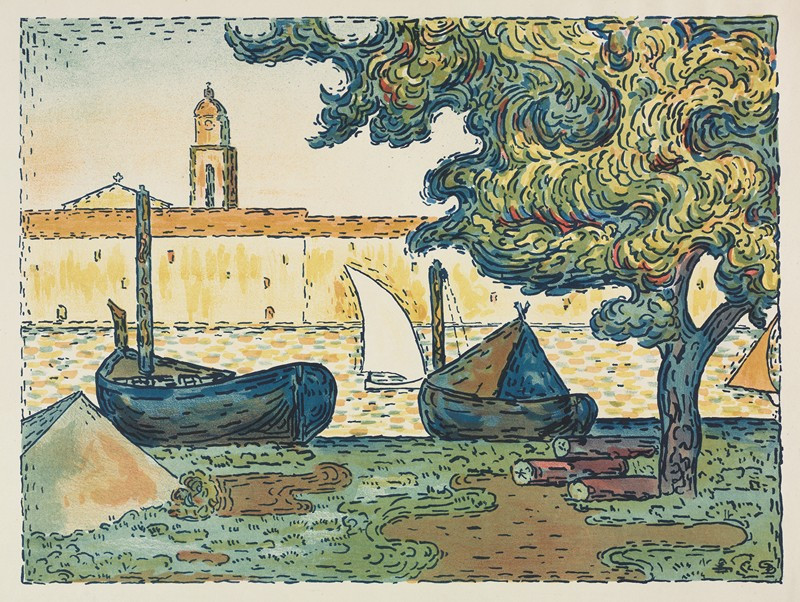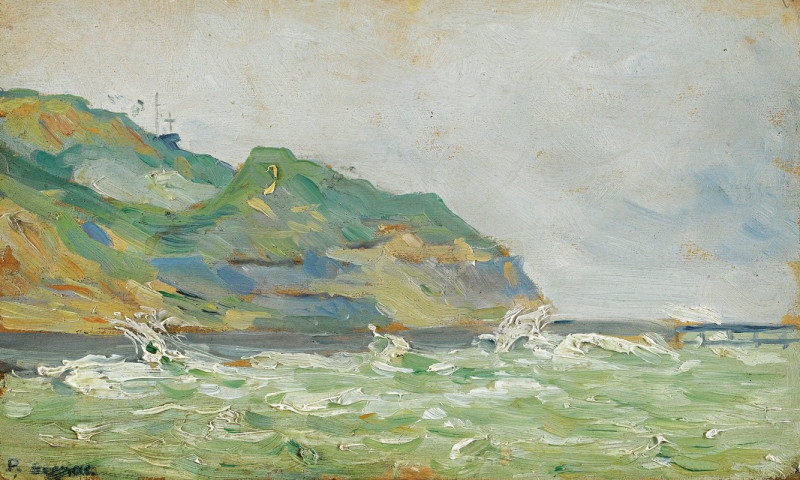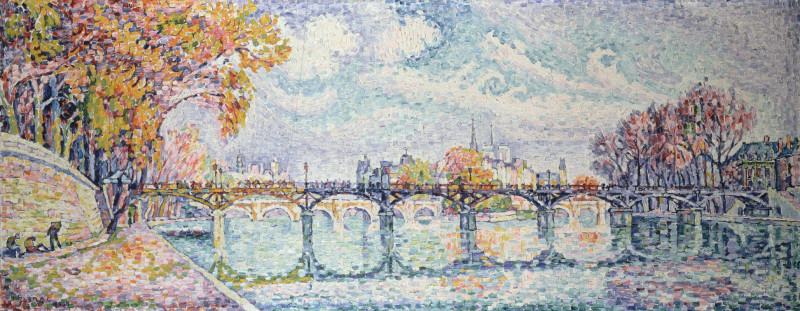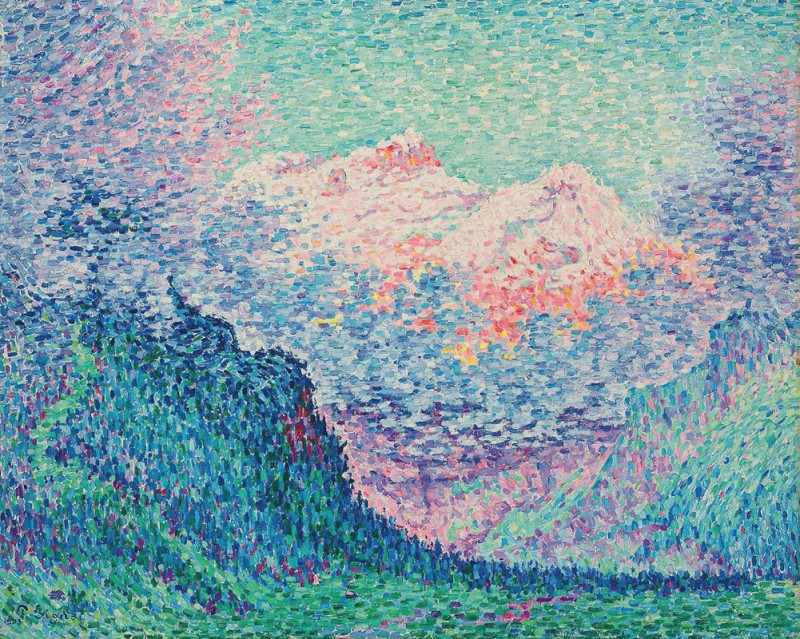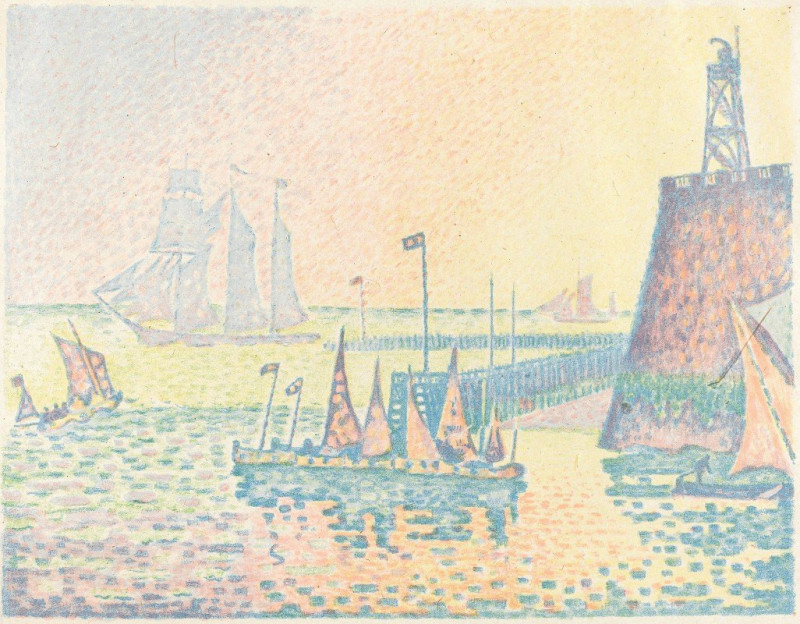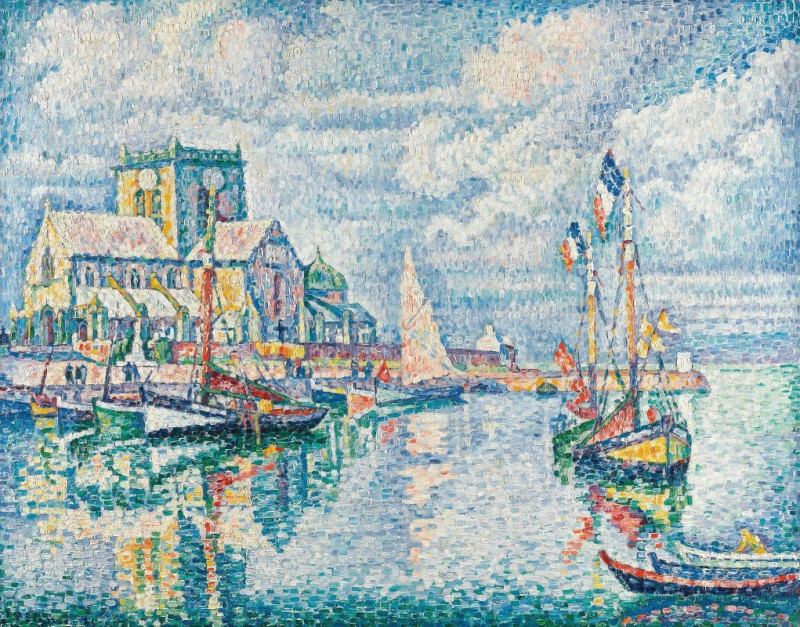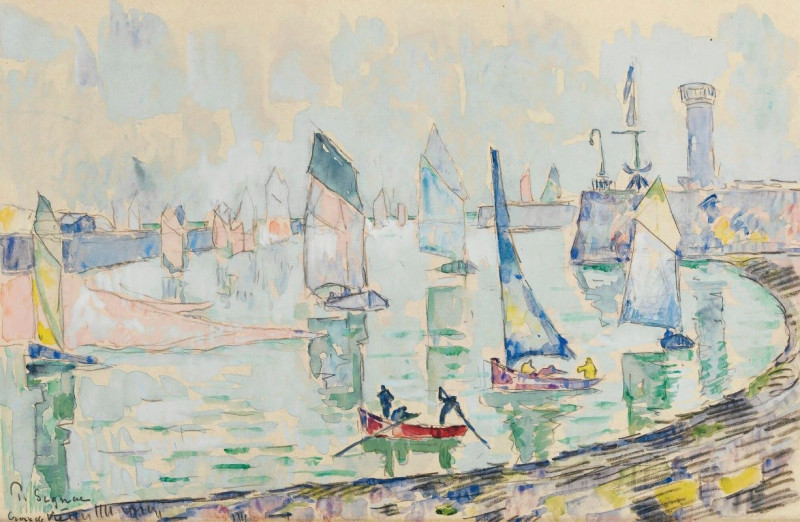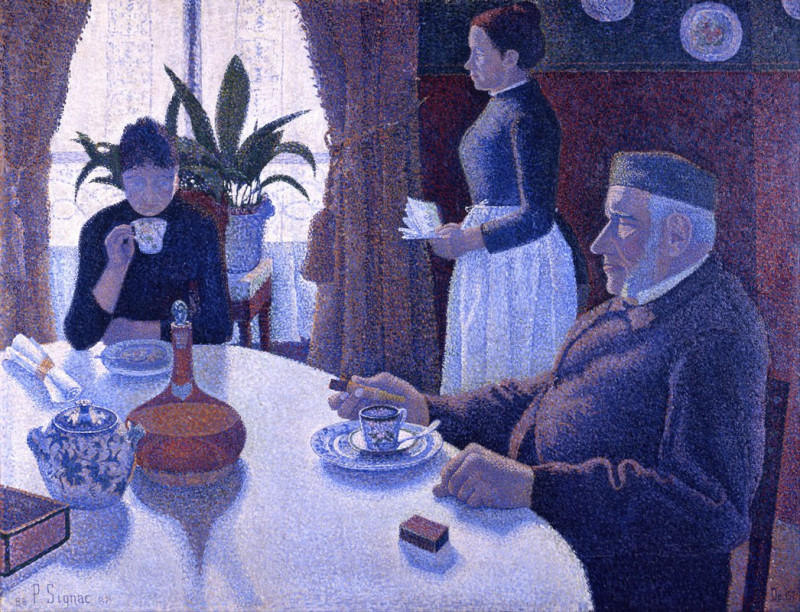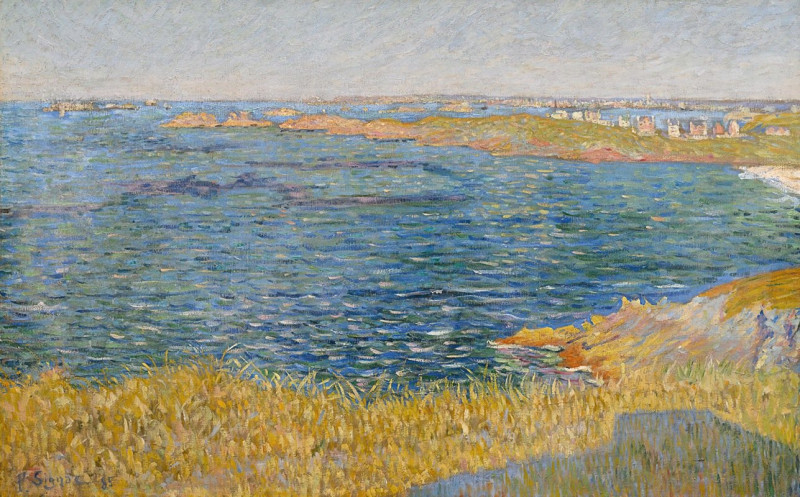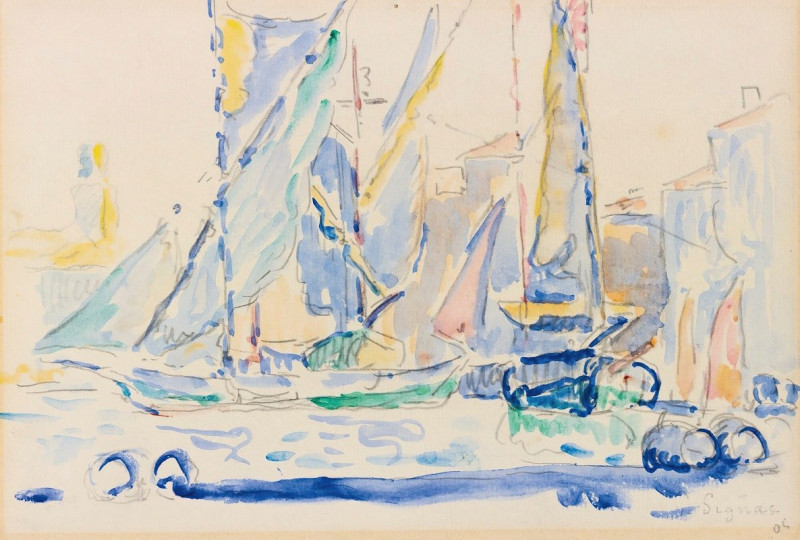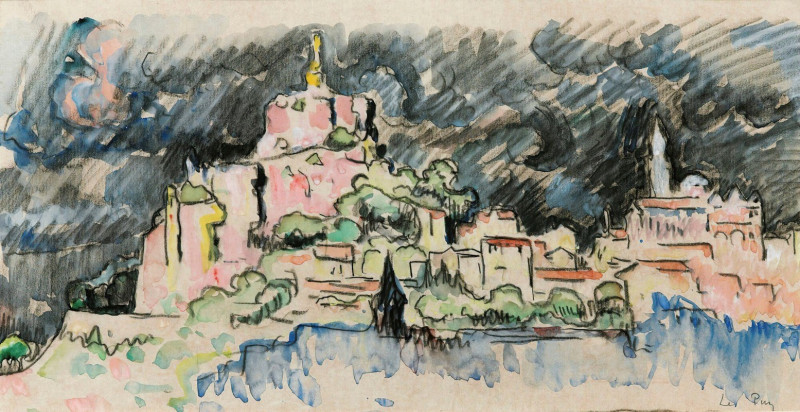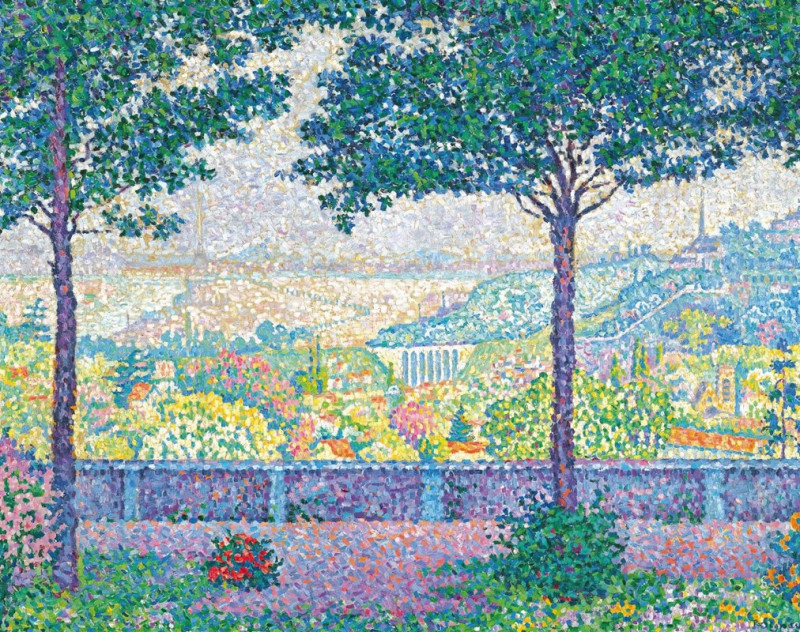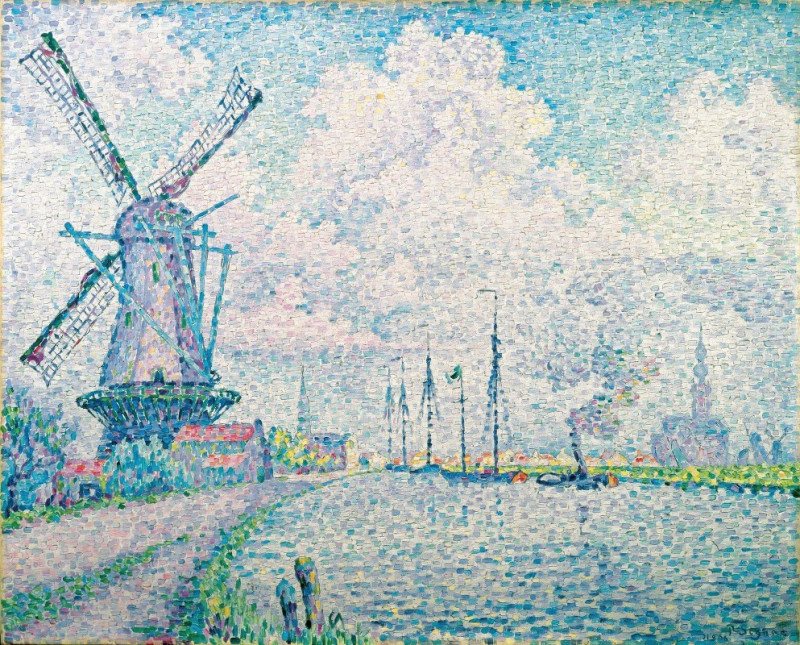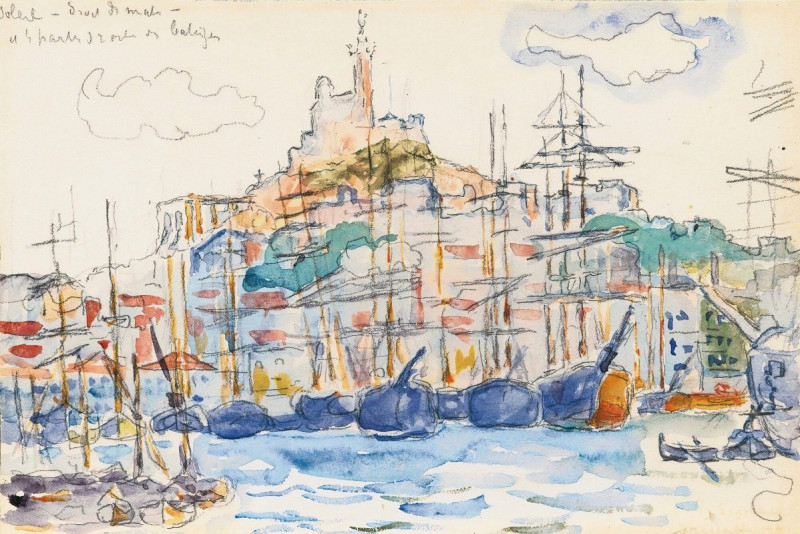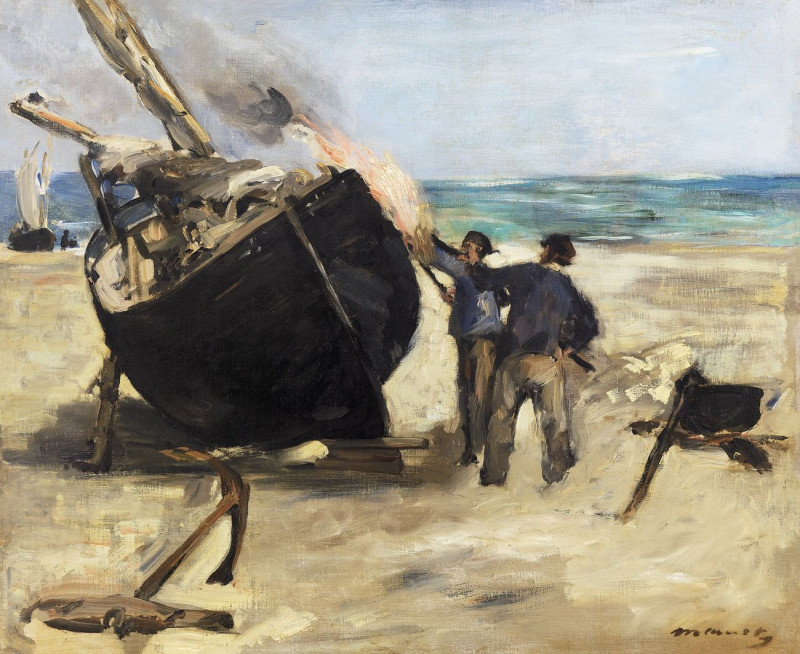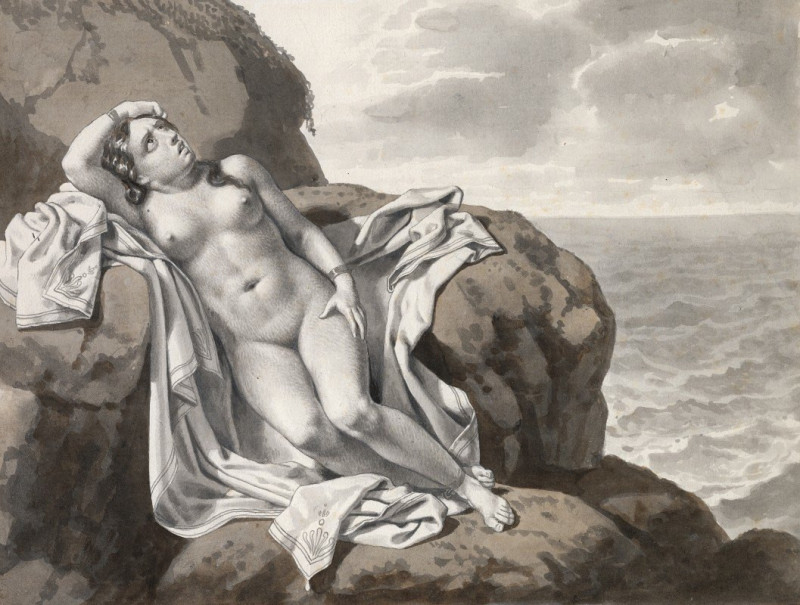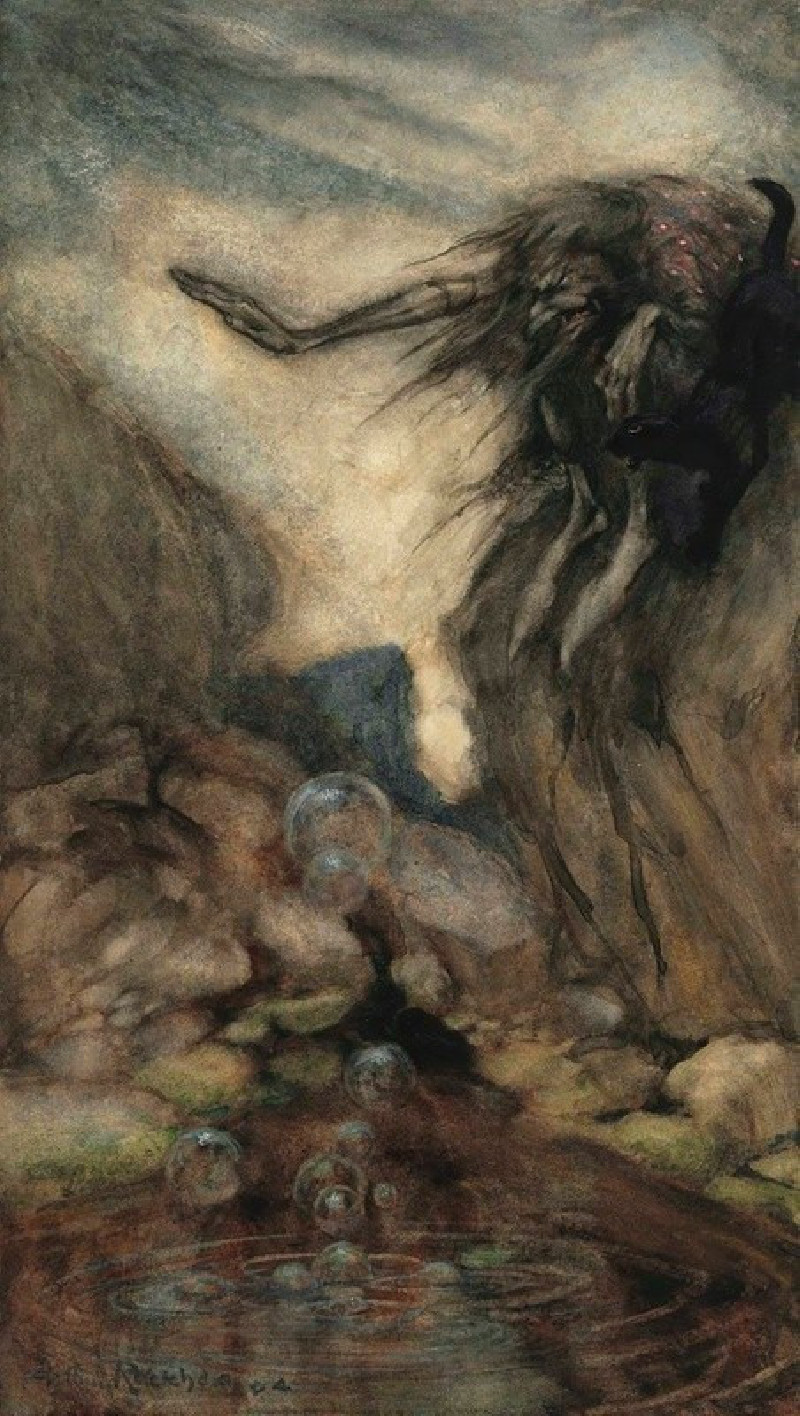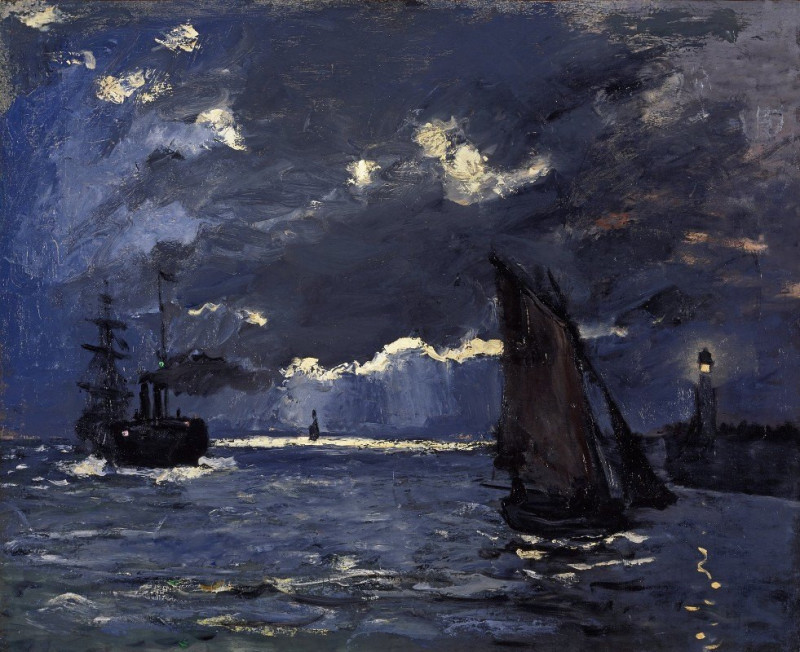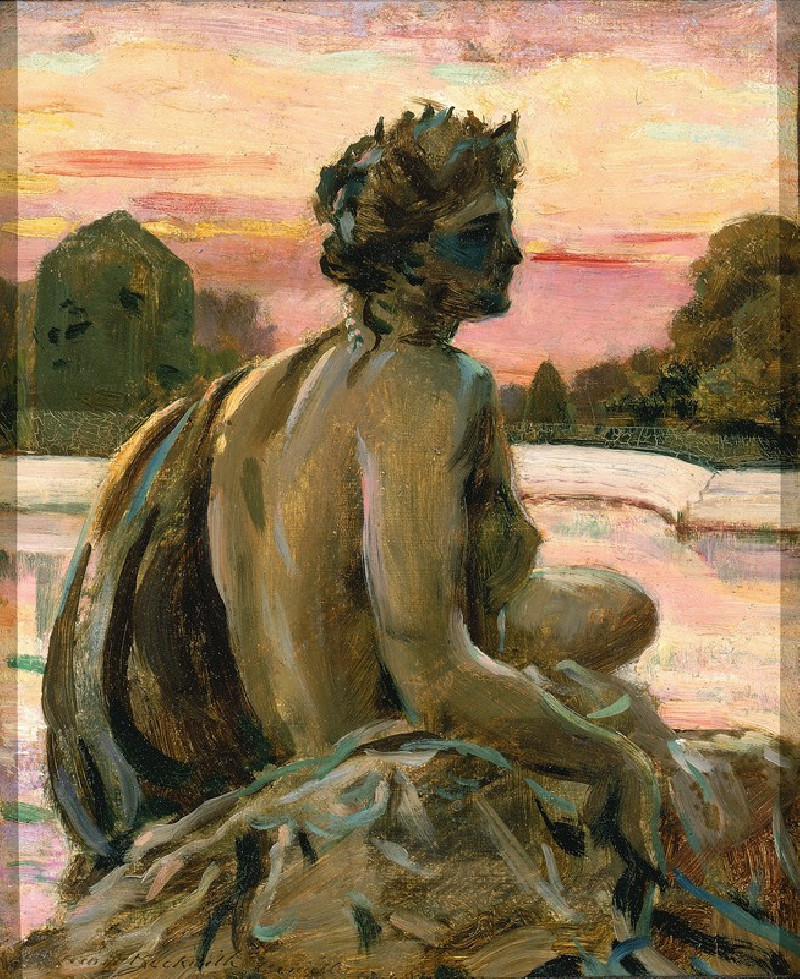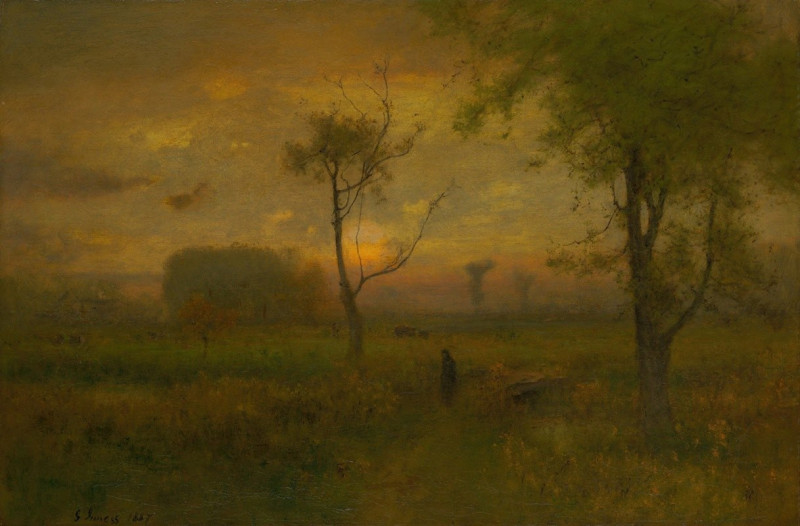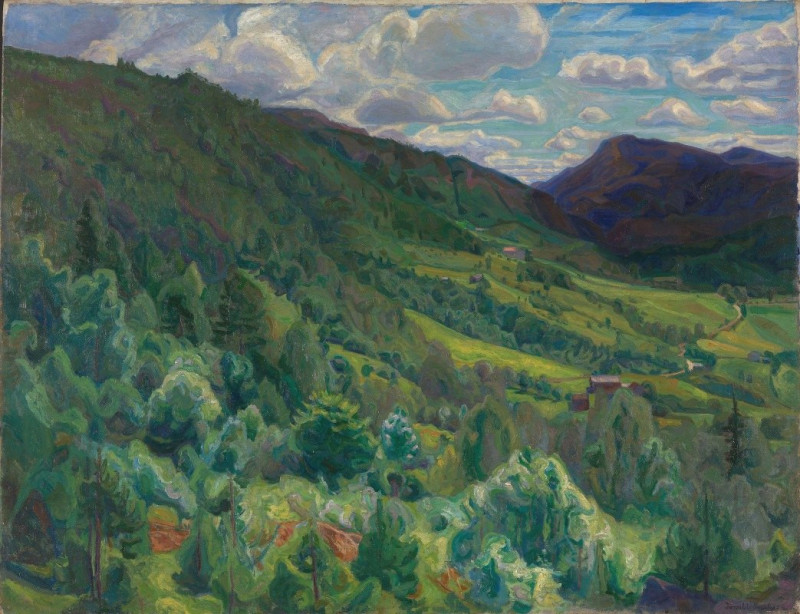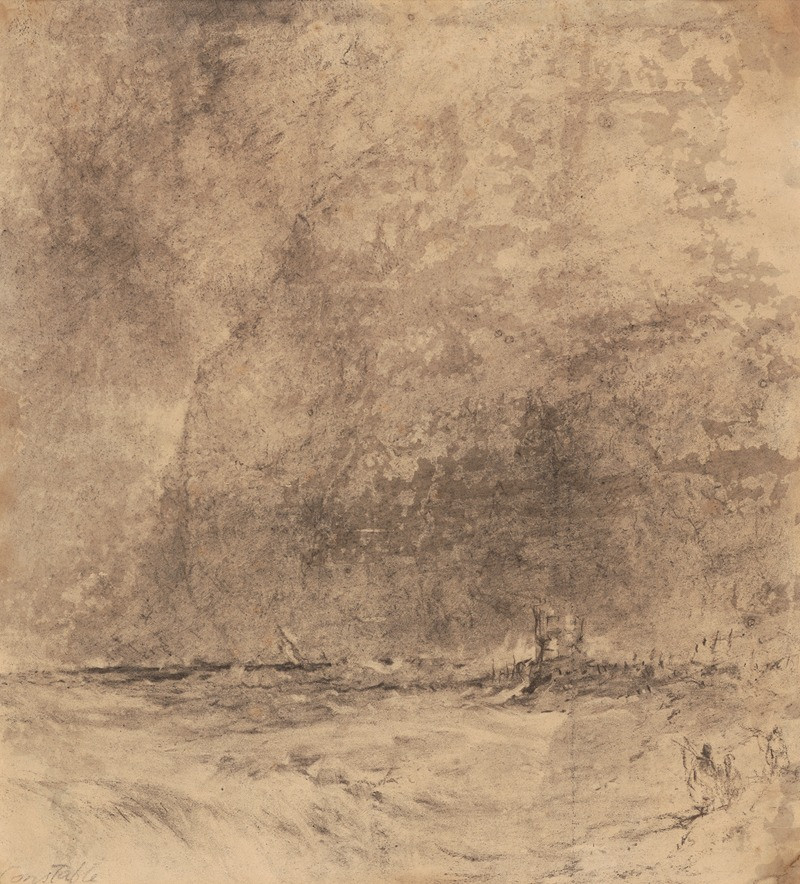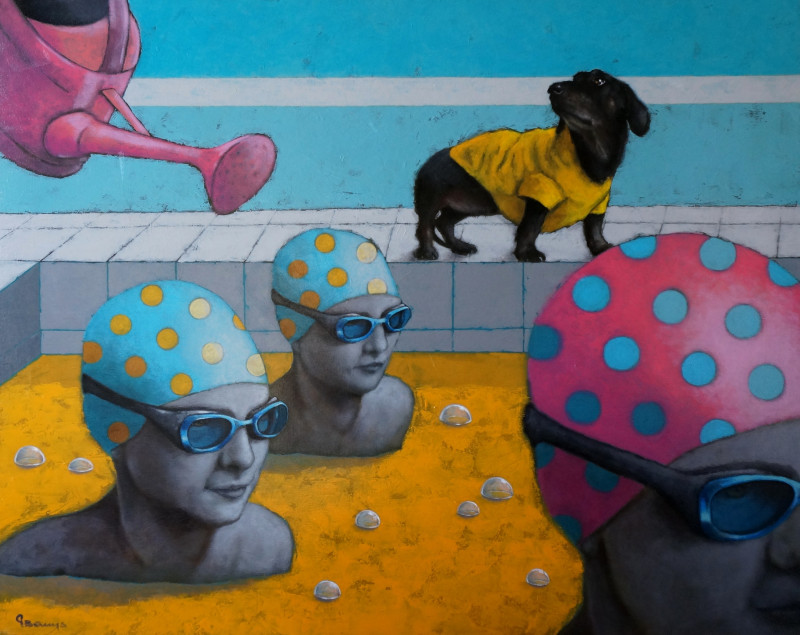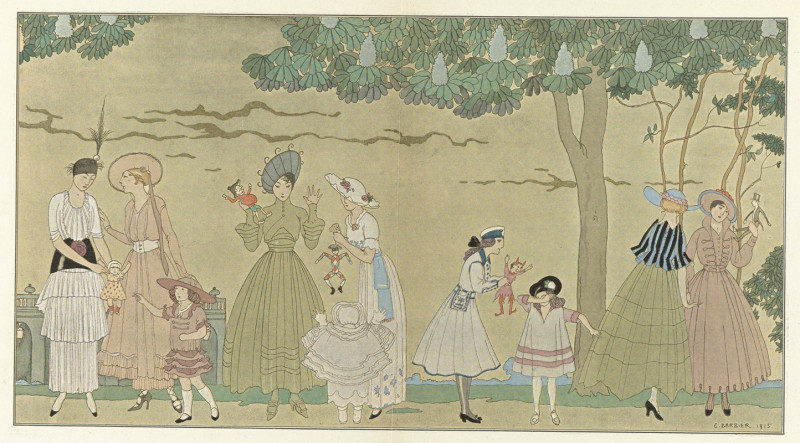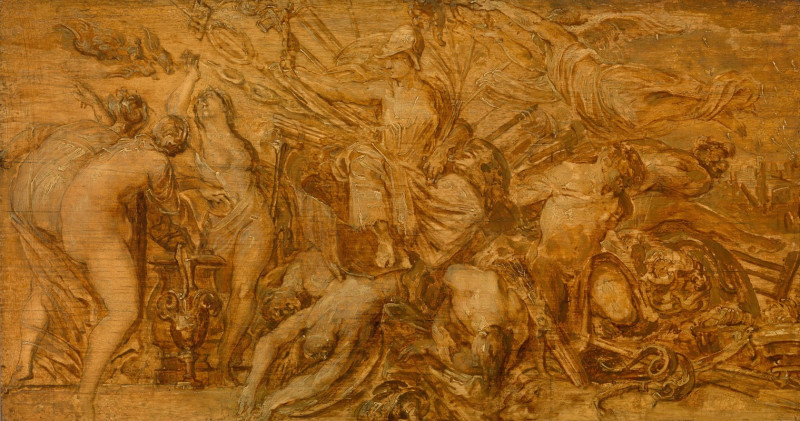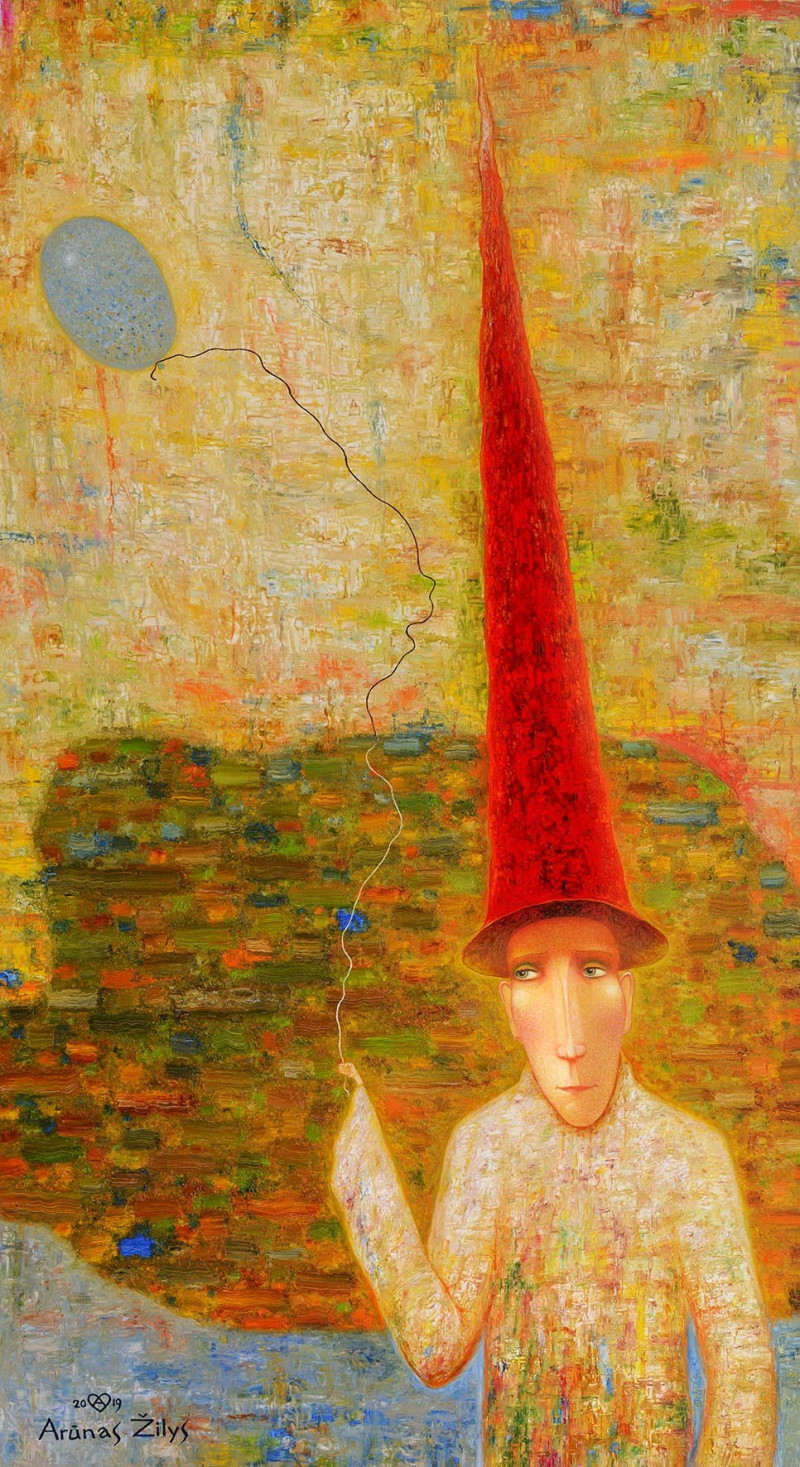Vaison (1933)
Technique: Giclée quality print
Recommended by our customers
More about this artwork
Dive into the charming essence of a quaint town with Paul Signac's picturesque watercolor and ink painting titled "Vaison" (1933). This artwork captures the vibrant atmosphere of a small village vibrant with life and color. The composition skillfully guides the viewer’s eye through the cobblestone paths leading to an archway, which is adorned with blooming flowers and lush foliage.In the foreground, Signac plays with colors and quick strokes, depicting people engrossed in daily activities, adding a dynamic human element to the serene architectural setting. Dominating the background is a delicately rendered clock tower, which stands as a proud sentinel over the houses, underlined by the sweeping, expressive sky. This sky, characterized by light brushstrokes, conveys both movement and a breezy, open air feeling that complements the structural forms below."Vaison" is a wonderful example of Signac’s expertise in combining watercolor and ink to create a lively yet peaceful town scene that invites viewers to pause and imagine a day in this idyllic setting.
Delivery
Returns
Paul Signac (1863-1935) was a French Neo-Impressionist painter. Together with Georges Seurat, Signac developed the Pointillism style. He was a passionate sailor, bringing back watercolor sketches of ports and nature from his travels, then turning them into large studio canvases with mosaic-like squares of color. He abandoned the short brushstrokes and intuitive dabs of color of the impressionists for a more exact scientific approach to applying dots with the intention to combine and blend not on the canvas, but in the viewer's eye.

